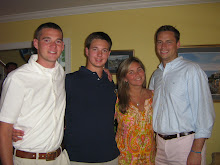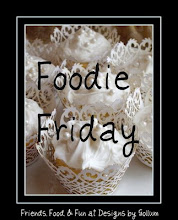So, I got a bit overwhelmed and backed off the blogging...I have been subbing a lot and since there is no routine or pre-arrangement, very often I am not prepared to be running out to sub. Then it's Kindergarten or 6th or Music or Library and I am a little over-extended! Today was a half day, so I was able to recharge a bit...yes, I finally got to go to TJ Maxx for a few minutes! I applaud all of you who work full or part time and have the kids and school and meetings, etc. I think that is what did it...so may PTA and other school meetings and bake for this and that and run and get the shirt for the concert...and the fact that none of my clothes feel right...ugh.
I also am in the middle of my beautiful blogger and feel as if I have an unfinished homework assignment...So, here I go again!!!! Grab a cup of tea for this one!
6. I LOVE transferware. I started when I found my first plate at a cute shop. It was brown and I fell in love.
It just says English Ironstone England on the back.
Then I discovered Spode and Old English Castles by Johnson Brothers. First I will tell you a bit about Transferware......
Transferware is the term given to pottery that has had a pattern applied by transferring the print from a copper plate to a specially sized paper and finally to the pottery body. While produced mostly on earthenware, transfer prints are also found on ironstone, porcelain and bone china. Most transferware, around 90%, was made in the Staffordshire county of England, but it was also made in other areas of Great Britain such as Leeds, Liverpool, Swansea and Scotland.
At first the patterns were copied in style and detail from the Chinese. As transferware became more popular it was anglicized and many patterns were copied directly from prints and etchings that were popular in the early nineteenth century.
Transferware first started appearing on the market in the late 18th century, and exploded in popularity in the 1820s and 1830s. Although the styles of the transfers changed over the years, it has been made continuously since then. It is only since the 1990s that the pottery industry has moved its production off shore and out of Great Britain.
Although more blue was produced than other colors, colored transferware became popular in America in the 1830s and was exported in red, pink, purple, cranberry, brown, black, green, yellow, gray and various combinations of these colors.
Here are a few pieces from my collection!
Old English Castle and my lilacs....ahhhh
Old British Castles and Spode
Asiatic platter and Old British Castles plates and teacups
Old British Castles bread and butter or I use it for coins and shells and candles...
The green is Ridgway by Staffordshire. I love the OB Castles, because each one depicts a different castle in England...for example-Blannary, Dudley...
The Christmas plates are Queens (inexpensive) and the white with blue-bottom left- is
Royal Doulton (Classic Rose-LOVE) and probably not transferware-but pretty! The upper left is made by Unicorn (from TJ Maxx <3) in Stafforshire England, and inexpensive.
You can find transferware in antique shops, flea markets, garage sales, Marshalls and TJ Maxx, on line sites, ebay, etc. Pick up a few and you may become addicted!
Next time 7! I'll try not to take so long to post again!
~Nancy
 (almost forgot this kid!)
(almost forgot this kid!)



















































































